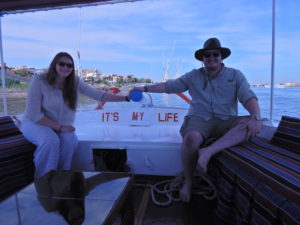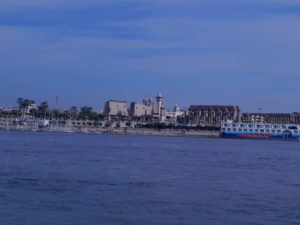
South of Cairo, Luxor sits on the Nile River and is an absolute must if you love history! Divided into 2 banks, the East and the West, there are many ancient monuments to see in both areas, so make sure to spend at least a few days here. We had to split up the posts for Luxor because there was so much to tell about this incredible city!
Quick Link to:
Transportation
There are a few options to get to Luxor from Cairo. There is either a train ride, bus ride or there is a way to fly as well if you would rather save the time. We opted to pay a little more and only take up 1 hour of our time each way.
- Egypt Air: This is the only airline that operates from Cairo to Luxor. The journey on Egypt Air was nothing too exciting since it was a short flight and it was late at night.

They do offer snacks and drinks onboard the flight for free of charge which is nice. The seats and legroom are pretty standard compared to most European and American carriers.

- Private Car: It was very nice to have a private car for transportation once we arrived in Luxor. Our tour guide, Mohamed Zaki, greeted us with a smile and took us to our hotel. It was very late at night and after spending most of the day driving from the Desert to Cairo and flying down to Luxor, we were ready to get some sleep.

Accommodations
- Emilio Hotel: We will start with the few positives of this hotel. It was clean and it was convenient to have breakfast included. However, the title of this section might be better titled “Where not to stay” since this hotel was not to our liking, for the following reasons: 1. The wifi was extremely limited and although this seems like a petty request, our families wanted to know where we were so we tried to keep in contact with them. This made it difficult as the wifi only worked in the lounge of the hotel and it was very finicky.
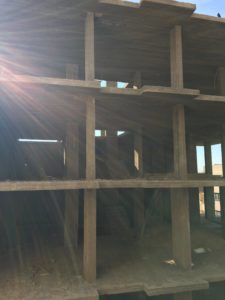
2. The water in the hotel never got hot so we were taking cold showers each morning. Again, may seem to some that this is a minor detail but we do like to have the water be at least a bit warm and not ice cold as the water in this hotel was. 3. It would have been nice to have a good view (see picture above) but it was not necessary of course as we were hardly in the room.
To-Do
- Boat Ride on the Nile: Our tour guide, Mohamed met us at the hotel and let us know that we would be taking a banana boat on the Nile River. We both had no idea what kind of boat that was, so we were curious to start our day. It was only a short walk from our hotel to the river, the river looked nice and cool on another beautiful day.

We saw our captain getting our boat prepared to set sail on the Nile. This boat was very similar to the boat ride we took in Cairo and thankfully nothing like the “banana boat” we were on in Oman.
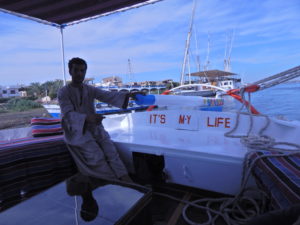
The colorful boat read “It’s My Life” which was a perfect fit for our traveling adventure. Once we got on the Nile, we were able to put our feet in the cool water and our captain also made us some hibiscus tea. It was so delicious that we asked for a 2nd cup! On our boat ride we were able to see some of the local people working with cattle on the farms or in the river fishing for food. The ride lasted a little more than an hour and a half, which was the perfect amount of time to experience the Nile River in Luxor.
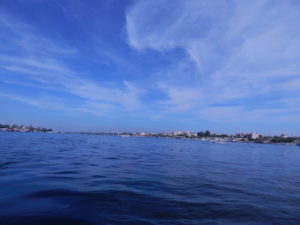
- Karnak Temple: Previously known as the Temple of Amun in Thebes, Egypt, the original name has to do with the belief that Thebes was the first city at the beginning of the world that was founded on land which rose from the “waters of chaos”. It was believed that the creator-god was Atum and that Amun was a combination of Atum and Ra (the sun god). This was a place where they could go to worship him and where he would interact directly with the Egyptians.
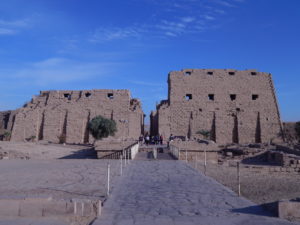
Covering about 200 acres, this city of Temples is a UNESCO World Heritage Site, which was constructed between 2050-1710 B.C. It had several names in ancient times such as “Throne of the Two Lands” (Nesut-Towi), “The Finest of Seats” (Ipet-Iset) and finally, “The Most Select of Places” (Ipet-isut).
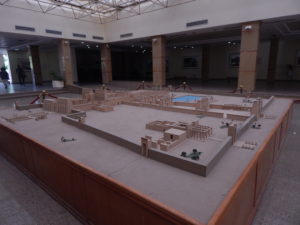
Housing large columns with hieroglyphics and statues, we spent about 3 hours marveling at its wondrous artifacts. The entrance fee is 120 Egyptian pounds per person ($7).
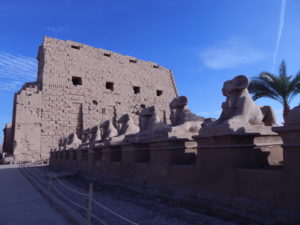
Once we passed through the main entrance of Karnak Temple, we came into the Great Court where we could see the Statue of Ramesses II. In the court, there once stood ten 21-meter high papyrus columns that were built by Tahraqa, a pharaoh that ruled during the 25th dynasty. Out of all 10, there is only one still standing. There are a few beliefs about what the use of this place was. Some people believe it was a shrine while others believe since it is open to the sky, it may have served another ritual purpose (perhaps worship to the sun god).
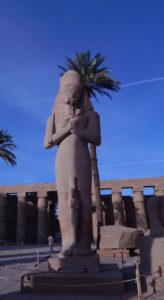
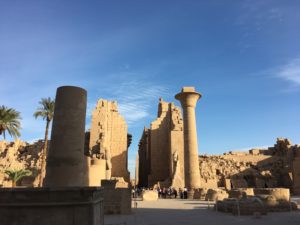
After the court, we reached the The Great Hypostyle Hall-an enormous room filled with 134 sandstone columns. This magnificent space is still the largest room of any religious building in the world. It is one of the most impressive parts of Karnak Temple and it took our breath away!
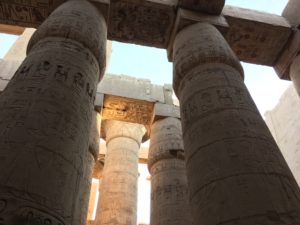
Supposed to represent papyrus plants that are further developed in their growth, there are 12 columns that run through the center of the hall that are taller than the rest of the 49 feet-high columns. These reach 69 feet high and it almost feels like you are in a forest of columns, with how many there are, all around you.
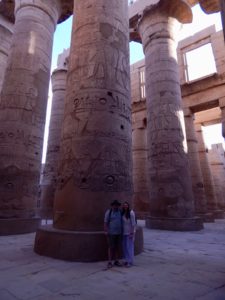
Continuing on, we came to a small area, which was during the time of the pharaoh Thutmose I, the front of the the Temple of Amun at Karnak. This part of Karnak is sometimes referred to as the Obelisk Court or the Court of Amenhotep III. 4 structures were built by Thutmose I and III but only one of them, Thutmose I’s obelisks, remains. In addition, the daughter of Thutmose, Hatshepsut placed four obelisks in the Temple of Amun, with only 2 of them remaining-1 standing and 1 lying down near the Sacred Lake.
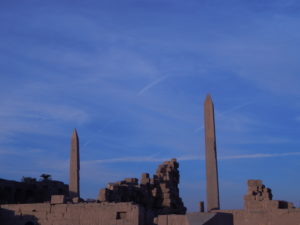
This court then leads to a granite shrine, made up of two parts, an outer area where offerings were made to the god, and an inner area which contains a pedestal. The walls are adorned with hieroglyphics, with many of them featuring the god Amun.
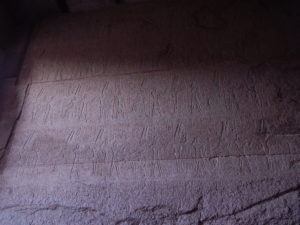
Our final stop was the Sacred Lake and surrounding artifacts. This lake is manmade and filled with groundwater, representing the “water of chaos” from which Thebes was created. The priests of the gods would use the lake for ritual and temple needs and it was also home to the sacred geese of the god Amun. The priests lived on site and did a number of things, from collecting donations to providing food and counsel, and interpreting the gods’ will for the people. By the end of the New Kingdom in Egypt, there were over 80,000 priests at Karnak and the high priests were more wealthy than the pharaoh.
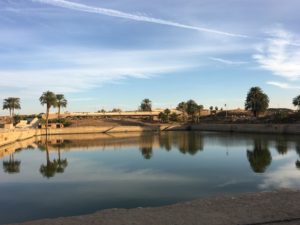
Near the lake, we found the other obelisk of Hatshepsut, laying down.
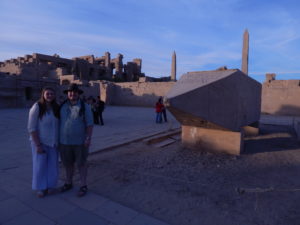
Also near the lake we found the Monumental Scarab (Beetle). We saw people going around the scarab, so we asked Mohamed what the meaning of going around the monument was. He told us that people need to go around the Monumental Scarab 3 times and then you will have good luck. So to have good luck for the rest of our trip we did it! Upon research of the Scarab, there is also another ritual you can do. If one walks around the scarab seven times, he or she will never again will have love problems.
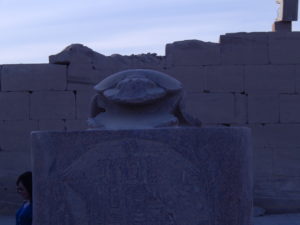
- Luxor Temple: At over 1.5 miles, the the Avenue of Sphinxes once connected the two temples: Karnak and Luxor. Unfortunately, this is not the case today and we had to travel by van to get to Luxor Temple.
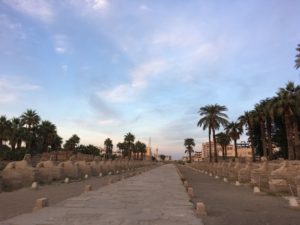
Built around 1400 B.C. during the New Kingdom, the temple was known as “The Southern Sanctuary” (ipet-resyt). Dedicated to the gods Amun, Mut, and Khonsu, it was also a key part of the Opet Festival, an annual celebration of their gods.
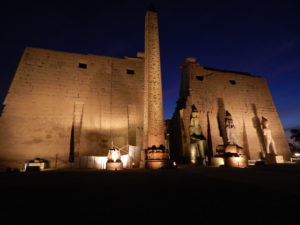
Although it is much smaller than Karnak Temple, we were still able to spend a couple hours discovering all the beautiful artifacts that it houses. The entrance fee to the temple was 100 Egyptian pounds per person ($6).
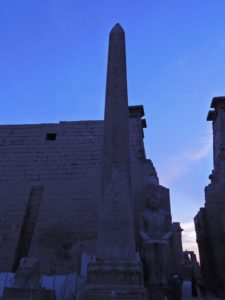
In front of the temple, we saw the only remaining 80 foot obelisk, built by the Ramesses. There were once 2 of them but now the other stands in Paris, at the Place De La Concorde. Four sacred baboons are carved at the bottom and the names of Ramesses appear on each side.
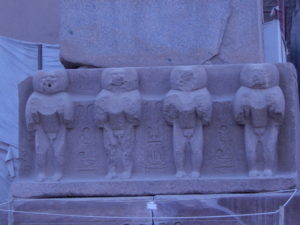
Once we walked through the entrance, we came to the Court of Ramesses II. There are 74 papyrus columns, in one area of the court there is a shrine to the Thutmose III, while in the other there are statues of Ramesses II.
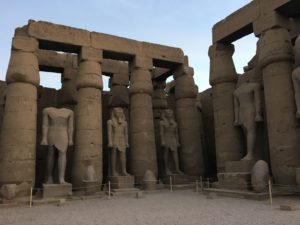
The next area we saw was the Amenhotep III Colonnade. Built by the Amenhotep III, these 14 columns at 52 feet high, this is said to have been the grand entrance and is part of the oldest part of the Temple. It may have been intended as the founding block to become a great hypostyle hall, like the one at Karnak but Amenhotep III died before it was finished.
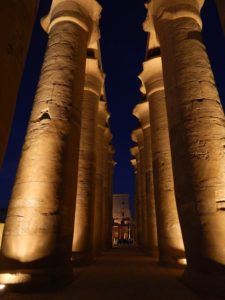
Right around the same area was a seated statue of Tutankhamun’s (King Tut) grandfather, Amenhotep III and his wife.
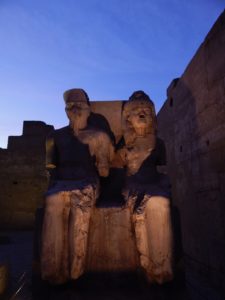
Walking throughout the rest of the Temple, we came to the Court of Amenhotep III, or some people refer to as the “Sun Court”.
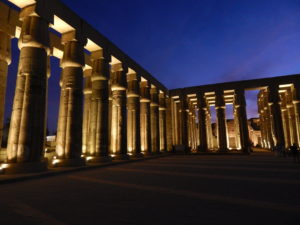
It leads into the Hypostyle Hall, that houses 32 columns and at the end of the hall are several rooms, including a few chapels and a sanctuary.
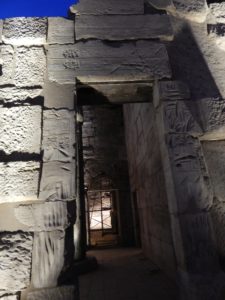
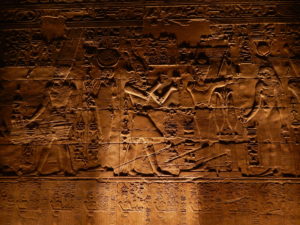
This first full day of Luxor was very exciting and we were definitely excited for the next day, which would be spent exploring the West Bank.
